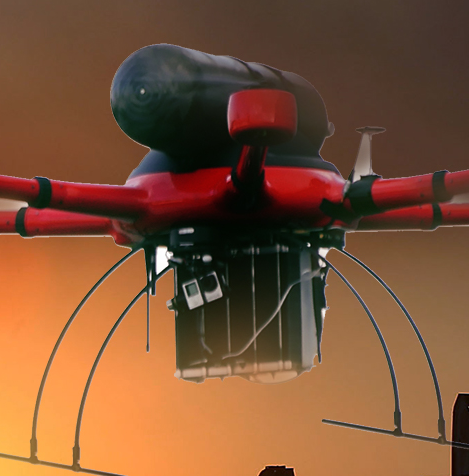
Military drones – typically large aircraft carrying heavy payloads – are getting smaller and lighter, as military operations realize that drones can be used for a wide variety of applications in the field. And industrial drones are developing the technologies required for military applications: long endurance, ability to withstand tough terrain, and customizable payloads.
Drone manufacturer MMC, a global leader in industrial and military grade drones and developers of the first hydrogen drone to market, have introduced the next generation of their hydrogen industrial drone, designed for the military: The HyDrone 1800. Built of carbon fiber, the HyDrone 1800 is designed for use many different environments: which is why the drone has been able to excel as the go-to machine for bringing power to remote areas in Asia. The drone is wind-resistant, rain-resistant, cold-resistant and still incredibly lightweight. Most importantly, the HyDrone 1800’s hydrogen fuel cell technology provides a flight endurance of 4 – 4.5 hours or of a stunning 50+ hours when combined with MMC tethered drone technology.
The greater endurance of hydrogen technology means that the HyDrone series can be used for industrial applications as varied as power line stringing, agriculture, inspections, mining, or construction. Packaged for military organizations – with customization and packaged solutions in target acquisition and reconnaissance technology (ISTAR) – the drone is ideal for military applications like intelligence gathering, border patrol, aerial fire support, laser designation, or battle management services to tactical military operators. The MMC HyDrone series also feature a “plug-and-play” payload system, so that one drone can perform a wide variety of applications. The open development – an important feature for both military and industrial organizations – mean that new tools can be easily adapted to the system to meet specific requirements.
As military drones get smaller, lighter, and more nimble for a wider field of applications; industrial drones get stronger, more adaptable, and more resilient. With technology breakthroughs like hydrogen fuel, the two categories are meeting in the middle.
Miriam McNabb is the Editor-in-Chief of DRONELIFE and CEO of JobForDrones, a professional drone services marketplace, and a fascinated observer of the emerging drone industry and the regulatory environment for drones. Miriam has penned over 3,000 articles focused on the commercial drone space and is an international speaker and recognized figure in the industry. Miriam has a degree from the University of Chicago and over 20 years of experience in high tech sales and marketing for new technologies.
For drone industry consulting or writing, Email Miriam.
TWITTER:@spaldingbarker
Subscribe to DroneLife here.